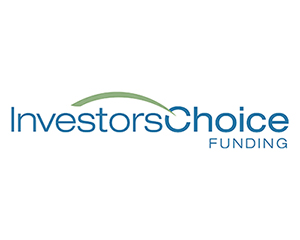Talk to an Expert!
Want to to learn more or see how if applies to your project? Let’s Connect!
Buying Turnkey Rental Property: The Smart Passive Income Strategy?
If you’ve been searching for a relatively hassle-free way to get into real estate investing, chances are you’ve come across the term “turnkey rental property.” These investment properties, often fully renovated and sold with tenants in place, promise immediate rental income and hands-off management—making them incredibly appealing to out-of-state or first-time investors.
But are turnkey rentals really the easiest path to passive income? Or do they come with hidden risks that can erode your returns over time?
In this post, we’ll take a deep dive into what turnkey rental properties are, the pros and cons of buying one, how to analyze a deal, and whether this strategy is right for your investing goals.
What Is a Turnkey Rental Property?
A turnkey rental property is a real estate investment that’s ready to produce income as soon as you purchase it. The property is typically:
- Fully renovated or newly constructed
- Occupied by tenants
- Professionally managed by a third-party company
The term “turnkey” implies you can “turn the key” and start earning without the stress of repairs, leasing, or property management.
Turnkey providers often market these homes to busy professionals, out-of-state investors, or those seeking a more passive real estate investing approach.
Who Should Consider Buying Turnkey Rentals?
Turnkey properties can be a solid choice for:
- New investors who want to avoid complex rehabs
- Out-of-state buyers looking for strong cash flow markets
- Busy professionals with limited time for hands-on management
- Retirees seeking stable passive income streams
- Portfolio diversifiers adding real estate to their holdings
However, this convenience comes at a price—literally. Let’s take a closer look at what you gain and what you give up when you buy turnkey.
Pros of Buying Turnkey Rental Properties
1. Immediate Cash Flow
Most turnkey rentals are sold with tenants already in place, allowing you to start collecting rent from day one. There’s no lag time from renovations or marketing for new renters, which means quicker returns on your investment.
2. Low Barrier to Entry
With no rehab experience needed, turnkey rentals provide an easy on-ramp into real estate investing. Providers handle the renovation, leasing, and often the property management as well.
3. Geographic Flexibility
Live in a high-cost city with low rental yields? Turnkey properties let you invest in more affordable, landlord-friendly states like Indiana, Ohio, or Alabama—without having to live there.
4. Professional Management
Most turnkey deals include third-party property management, meaning you won’t have to deal with maintenance calls, rent collection, or tenant disputes.
5. Time Efficiency
Compared to a BRRRR or fix-and-flip model, turnkey investing saves time. Investors can scale portfolios faster by purchasing multiple properties without the time and stress of renovations.
Cons of Buying Turnkey Rental Properties
1. Premium Pricing
Convenience isn’t free. Turnkey properties are often marked up beyond market value. You’re not just buying the home—you’re paying for the renovations, leasing, and a profit margin for the turnkey provider.
2. Quality Concerns
“Turnkey” isn’t a regulated term. Some providers cut corners on renovations or place low-quality tenants just to close the sale. Without proper vetting, you may inherit future headaches.
3. Limited Equity Upside
Because the property is already renovated and leased, there’s less opportunity to force appreciation through value-add improvements. You’re buying at retail, not wholesale.
4. Reliance on Third Parties
The property manager’s performance is crucial to your investment’s success. A bad manager can turn a great property into a money pit through poor maintenance and high tenant turnover.
5. Market Risk
Some turnkey companies sell in struggling or stagnant markets with poor job growth or high vacancy rates. You must do your own market research—don’t rely on the provider’s pitch alone.
How to Analyze a Turnkey Rental Deal
Whether you’re buying directly from a turnkey provider or on the open market, always do your due diligence.
Key Metrics to Review:
- Cap Rate: Net operating income divided by property price. A good turnkey rental should offer at least 6%–8% in today’s market.
- Cash-on-Cash Return: Your annual cash flow divided by your initial investment (down payment + closing costs).
- Rent-to-Price Ratio: Monthly rent ÷ purchase price. A ratio of 1% or more is ideal.
- Occupancy Rate: Check the average vacancy rate in the local market and for the specific neighborhood.
- Property Management Fees: These typically range from 8%–10% of gross rent. Be sure they’re reasonable.
- Tenant Quality: Review lease terms, rent payment history, and security deposits for existing tenants.
Questions to Ask a Turnkey Provider
- Who completed the renovation work, and can I see before/after photos?
- What repairs were done? Are there warranties on major systems?
- Who selected and screened the tenants?
- What is the average rent collection rate?
- What’s included in the property management contract?
- Is the property being sold at market value, or does it include a markup?
- Can I tour the property (or send a local agent/inspector)?
What’s your company’s track record with investors?
Should You Pay Cash or Finance a Turnkey Rental?
Turnkey rentals are attractive to both cash buyers and those using conventional financing. Each option comes with tradeoffs.
Financing Pros:
- Leverage improves ROI
- Keeps more capital available
- Interest may be tax-deductible
Cash Pros:
- Simpler closing
- No mortgage risk
- Immediate positive cash flow
Important Tip: Compare the cash-on-cash return between the two options. Even if the cap rate is the same, your leveraged ROI could be significantly higher with financing.
Red Flags to Watch Out For
- Overly optimistic rent projections
- Lack of independent third-party inspection
- No transparency around renovation scope
- High turnover or deferred maintenance
- One-size-fits-all property management contracts
Turnkey investing should still involve the same level of analysis as any other real estate deal. Trust, but verify.
Turnkey vs. BRRRR Strategy
If you’re deciding between buying turnkey or doing a BRRRR (Buy, Rehab, Rent, Refinance, Repeat), consider the tradeoffs.
| Category | Turnkey | BRRRR |
|---|---|---|
| Effort | Low | High |
| Speed | Fast | Slow |
| Equity | Lower (pay retail) | Higher (buy undervalue) |
| Risk | Moderate | Higher (rehab risk, appraisal risk) |
| Cash Flow | Predictable | Potentially higher |
| Control | Lower | Higher |
Turnkey wins for passive income and time savings. BRRRR is better for hands-on investors focused on maximizing equity.
Final Thoughts: Is a Turnkey Rental Right for You?
Turnkey rental properties offer a compelling option for investors who want passive income, geographical flexibility, and minimal day-to-day involvement. However, success with turnkey investing depends heavily on:
- Choosing the right provider
- Conducting thorough market and property due diligence
- Having realistic expectations about returns
- Monitoring property management performance
If you’re ready to build a passive income stream without swinging a hammer or managing contractors, turnkey rentals can be a powerful addition to your investment strategy.
But remember—turnkey doesn’t mean “risk-free.” Do your homework, run your numbers, and invest wisely.







